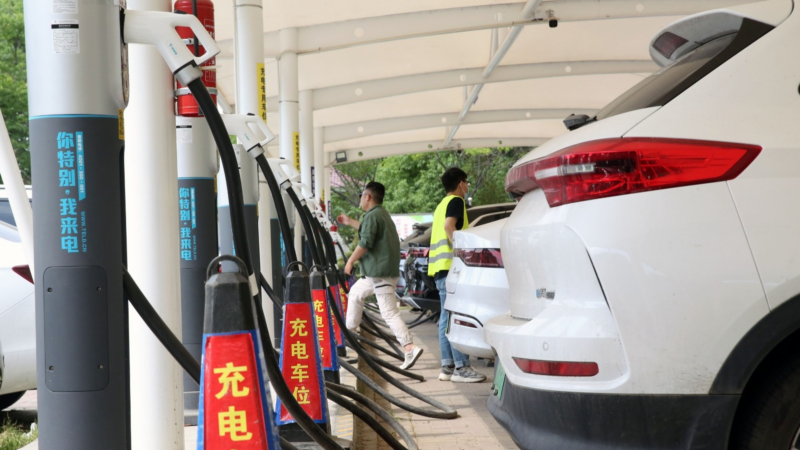China has solidified its position as the global leader in electric vehicle (EV) charging infrastructure, with a total of 16.7 million charging points by the end of July 2025. This expansion boasts a 53% year-on-year increase.
National Energy Administration Director Wang Hongzhi announced on August 26 that China has achieved a ratio of two charging piles for every five vehicles. This growth is reflected in the latest data: the total number of EV charging infrastructure units (charging piles) reached 16.696 million by the end of July 2025, a tenfold increase compared to 2020.
The first seven months of 2025 alone saw an addition of 3.878 million charging units, a 93.2% year-on-year increase. Public charging facilities grew by 623,000 units (up 28.9%), while private charging facilities surged by 3.255 million units (up 113.6%). The charger-to-new energy vehicle increment ratio stands at 1:1.8, indicating that infrastructure development is keeping pace with the growth of EV sales, which reached 6.913 million units domestically during the same period.
The surge in EV adoption has also driven a significant increase in electricity consumption. According to Du Zhongming, Director of the NEA Electricity Department, quoted by Chinese media CNR, electricity consumption for EV charging and swapping services grew by over 40% in the first seven months of this year. In July 2025 alone, national charging electricity consumption reached approximately 7.71 billion kWh, an increase of 1.0 billion kWh from the previous month, marking a 53.9% year-on-year and 14.9% month-on-month growth. This electricity primarily served buses and passenger vehicles, with sanitation/logistics vehicles and taxis accounting for a smaller share.
The charging operation market is dominated by a few major players. As of July 2025, the top 15 operators managed 84.1% of the total public charging piles. Leading the pack are TELD with 807,000 units, Star Charge with 703,000 units, and Yunkuai Charge with 656,000 units.
| Rank | Operator | Public Charging Piles (Jul 2025) |
|---|---|---|
| 1 | TELD | 807,000 |
| 2 | Star Charge | 703,000 |
| 3 | YKC | 656,000 |
| 4 | Orange Charge | 268,000 |
| 5 | EV King | 238,000 |
| 6 | State Grid | 196,000 |
| 7 | Lv C-Chong | 142,000 |
| 8 | Car Energy Net | 109,000 |
| 9 | Hoo Energy | 95,000 |
| 10 | China Southern Power Grid | 90,000 |
| 11 | EV Power | 79,000 |
| 12 | Kunlun | 64,000 |
| 13 | Wancheng Wanchong | 55,000 |
| 14 | Winlands | 53,000 |
| 15 | Hard Hitter | 49,000 |
Xiang Junyong, a member of the Beijing Population, Resources, Environment and Construction Committee, projects that China’s EV ownership will exceed 100 million by 2030, and the nation’s charging infrastructure will continue to grow rapidly, adhering to the principle of “moderately ahead of demand.”
In addition to companies that exclusively operate charging stations, major new energy vehicle manufacturers are also establishing their own charging networks, with Nio, Li Auto, and Tesla leading the race. Below is a ranking of self-built charging stations by Chinese new energy vehicle companies:
| Rank | Brand | Charging Stations | Charging Piles | Data Cut-off |
|---|---|---|---|---|
| 1 | Nio | 5,137 | 28,681 | Jul 3 |
| 2 | Li Auto | 2,851 | 15,655 | Jun 30 |
| 3 | Tesla | 2,800+ | 14,100+ | Jun 28 |
| 4 | XPeng | 2,348+ | 12,300+ | Jul 3 |
| 5 | Zeekr | 1,683 | 8,407 | Jul 1 |
| 6 | GAC Hyptec | 1,651 | 16,819 | Jul 2 |
| 7 | HIMA | 1,000+ | / | Jul 1 |
Follow us for ev updates
